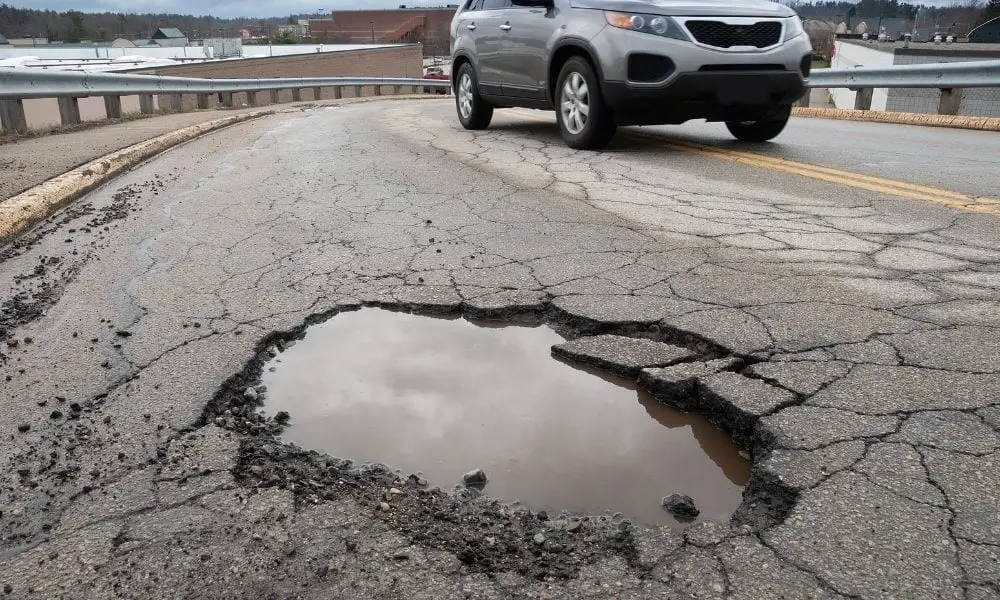

Tires put up with a lot. They carry not just you but your entire car to your destination, and they’re the only part that really hits the highway—pun intended. So, what are your tires’ biggest enemies? Here’s a handy list to help you fight them off.
A source of humor for thousands of cartoons and comic strips, a nail in the road isn’t so funny in real life. It may not even be a nail. Sharp metal, glass, and other objects left in the road by accidents, waste-haulers, litterers, or what have you make some roads a minefield of tire-puncturing damage. Interestingly, nails and screws most often end up in the rear tires. As it turns out, when a front tire runs over a nail, it sets the nail upright and it then sticks into the back tire.
If you see what looks like a pothole coming up in the road, avoid it. Better to be too safe than to deal with a potential flat or even worse, damage to the wheel assembly or axle. If you do hit a pothole particularly hard, pull over and inspect the tires. Look for bulges, flatness, or damage to the rims. Pull over for sure if steering seems off, the vehicle pulls to one side, or you feel strange vibrations or hear any unpleasant noises. Your tire pressure monitoring system (TPMS) may activate as well, displaying a bright flat tire icon on the dash. Potholes cause the rims to press against the pothole’s edge, which can break the internal plies. This allows air to escape. Whatever the case, if you hit a particularly bad pothole, put on the spare and get to a repair shop.
Let’s face it—cars aren’t great for the environment. As it turns out, the environment isn’t so great for cars (especially tires!) either. The heat and cold can cause fluctuations in tire air pressure, with high temps increasing pressure and cold temps reducing it. Too much pressure can lead to blowouts, while low temps can cause flats or even cuts due to flatter tires being pressed against the rims by curbs and other hard objects. Additionally, during the winter, road salt can build up and corrode the rubber and plastic. Wash off your tires after driving over particularly salty roads.
You saw this one coming, right? Perhaps your tires’ biggest enemy is not taking care of them. On average, car owners should replace their tires every six years or 20,000 to 50,000 miles. However, you might be able to extend this period by looking after them. Maintain their standard air pressure (found on the inside of the driver-side door) and adjust according to temperature as discussed above. Further, watch for wear and tear and monitor the treads. Also, have a mechanic inspect the alignment and rotate the wheels according to your manufacturer’s schedule. Take good care of your tires, and they’ll take good care of you.
Additional Resources:
Scooters
Uber
A business can develop in many ways. One of the best ways to grow your…
American families are once again juggling the seasonal custom—and financial burden—of back-to-school shopping as the…
Want to bond over unexpected activities? Look at these unconventional ways to connect with your…
Burnout isn’t just something that happens to CEOs. For moms homeschooling littles, it’s a very…
When it comes to long-distance motorcycling, comfort, reliability, and smart engineering can make or break…
Flowers have seen significant transformation over time; online flower shopping is increasingly common now for…